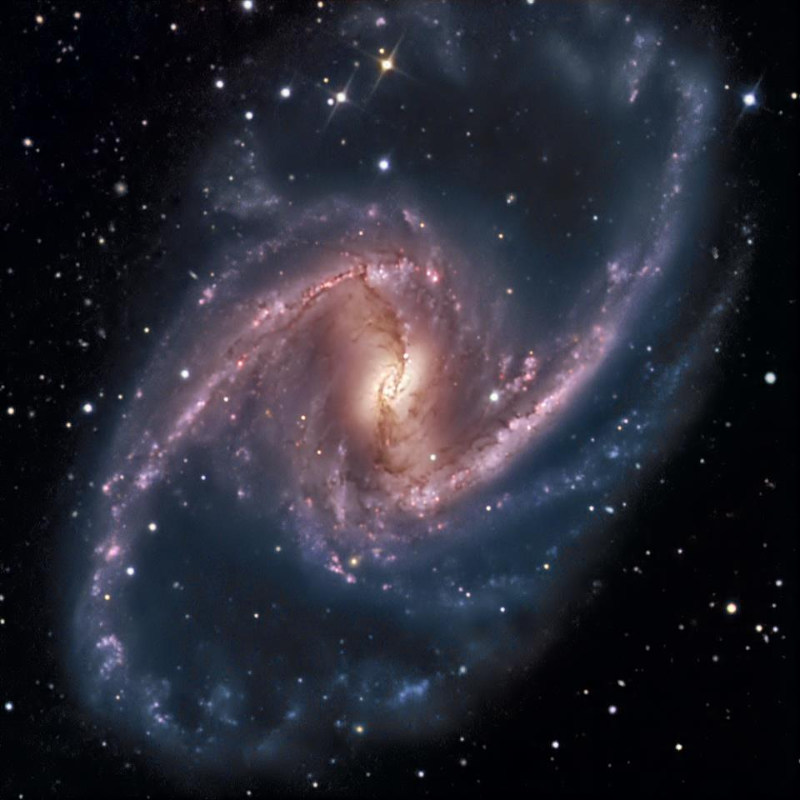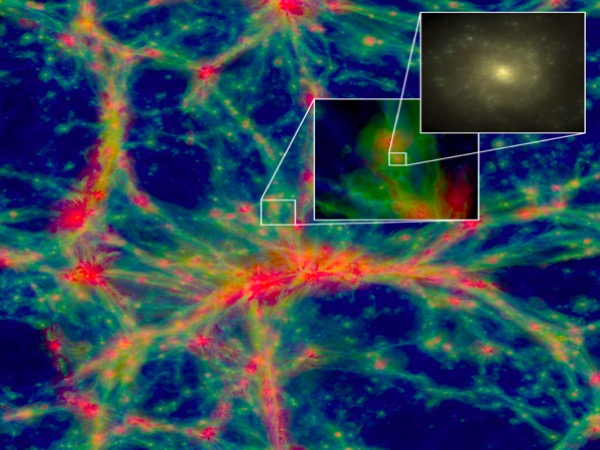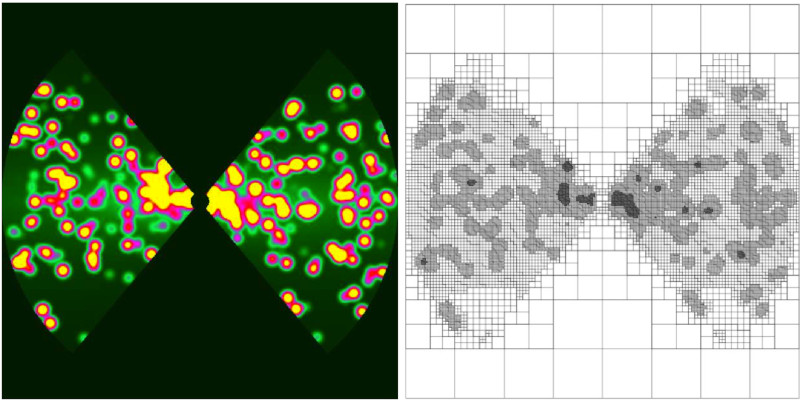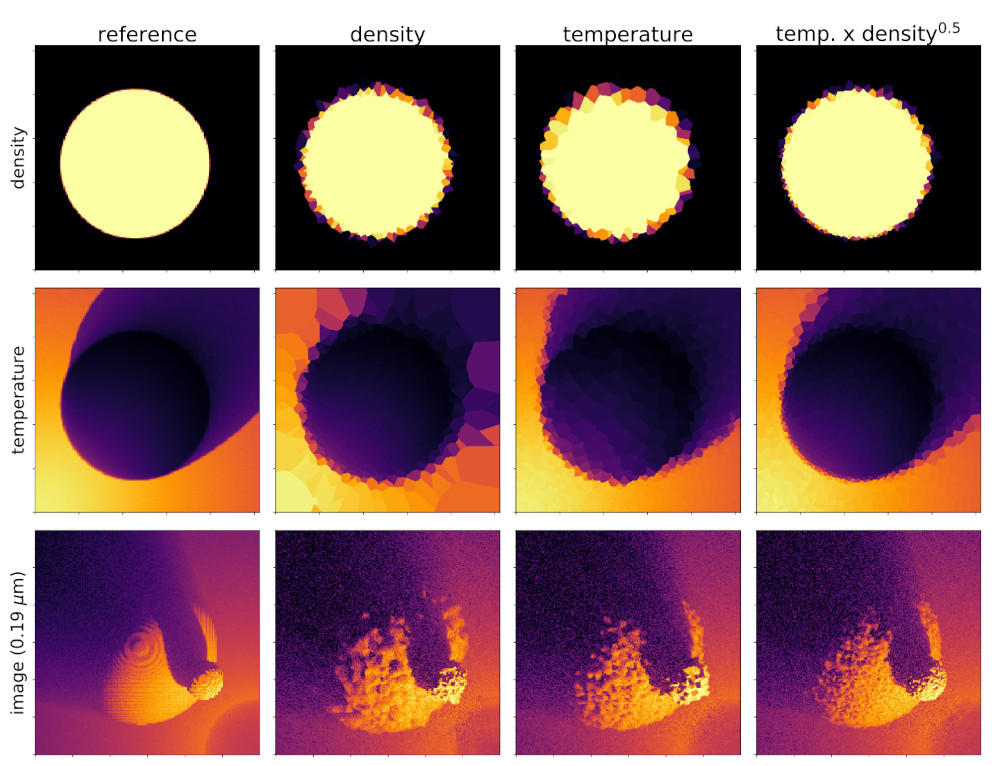Dynamic grids
in Monte Carlo radiative transfer
My master's thesis
Cosmological simulations follow physical particles through 3D space
However, for real galaxies we only see the projection on the sky

With radiative transfer, we can canculate what a simulated galaxy would look like

The top right inset shows such a radiative transfer rendering
In Monte Carlo radiative transfer, we simulate the transfer of photons through:
- their birth in stars
- their scattering and absorption by dust
- secondary emission from dust
For computational reasons, the dust distribution needs to be discretized on a grid.
In each grid cell, the dust density and temperature are treated to be constant.
The dust density is known at the start of the simulation
It is standard to place more cells where the dust density is higher
After all, that is where most of the interesting scattering happens

Left: slice through a dusty torus with clumps. Right: octree dust grid.
However, this does not necessarily lead to a good dust temperature discretization!
Unfortunately, we need the grid at the start of the simulation, when we don't have any temperature information.
The goal of my thesis was to adapt the dust grid at run-time.
Hence the name "dynamic grids".
In particular, we first do a short run on a standard density-optimized grid.
From this, we have an estimate of the dust temperature, and we can further refine the grid.
This refined grid now properly discretizes the dust temperature as well.
This is a test case where two spheres are illuminated from a corner.

The reference simulation uses a lot more cells, and is used as the ground truth
The other three grids use 30000 cells.

Combining dust and temperature information (right column) leads to the best results.